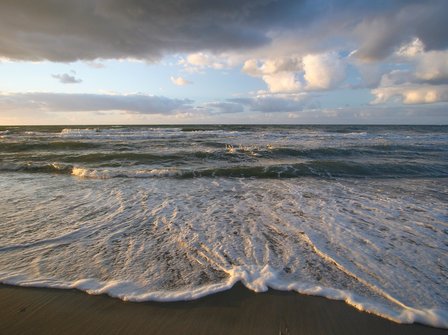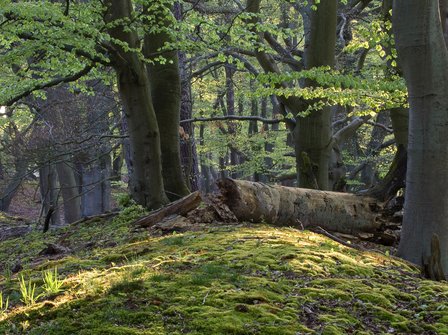Research and monitoring in the Western Pomerania Lagoon Area National Park
Aims of Research
National parks serve as reference areas for various issues. Research shows how nature and landscapes develop when not in use and whether management measures succeed in their aims. The development or regeneration of ecosystems occurs over long periods of time. Therefore, research must also be designed for the long term.
All scientific activities are also subordinated to the conservation goals of the national park. In order to minimize the disturbance caused by practical research on site and as a guide for research in the national park, a research plan was developed. This sets out in detail what type of research may take place. Anyone planning a research project in the national park should contact the National Park Authority at an early stage. The National Park Authority must approve and coordinate any third party research projects.
Who undertakes research in the national park?
The National Park Office commissions small scale inventories or research work. Most of the research in the national park is carried out as part of larger national research projects or as final degree theses through universities and technical colleges. As far as possible, the National Park Office carries out individual long-term monitoring projects on its own.
What is being researched?
In the Western Pomerania Lagoon Area National Park, research is carried out in three main fields that are closely related to the objectives and development of the national park:
-
the coasts (dynamics, birds, floodplain bogs)
-
Baltic Sea/Bodden
-
the forests
How is it being researched?
Four different methods are used, some of which can overlap:
When taking inventory, the structure of the national park's natural and near-natural communities is systematically explored. This involves recording plants, lichens, fungi and animals and mapping bodies of water, soils, forests and open land.
In order to fulfil the reporting obligations under the Natura 2000 guidelines, specially designated habitats as well as animal, bird and flora categories (as defined by the Fauna and Flora Habitat Guidelines) are documented and assessed at regular intervals.
Permanent environmental observation (monitoring) enables us to trace the development of living communities over long periods of time. Of particular interest are coastal dynamic processes and their effects on fauna and flora. The steady deposit of sediment along the coast creates a new habitat for pioneer and open land species. Through erosion and succession, one habitat elsewhere is irretrievably transferred to another. In the field of environmental observation, special attention is paid to documenting these processes and the species associated with them. Hydrological surveys supplement the data obtained. The impact of the national park on people and the regional economy is depicted through socio-economic monitoring.
Performance monitoring
The national park office uses performance monitoring to evaluate the effect of interventions to improve or develop habitats, such as grazing on salt grassland or heathland, and, if necessary, make adjustments to management.
Contact
Stephanie Puffpaff
Head of Research and Monitoring
Email: s.puffpaff(at)npa-vp.mvnet.de
Phone:
038392-35011-15
0173-2472707



